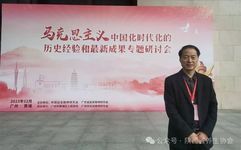
Eight Common Health Preservation Methods
Traditional Chinese Medicine (TCM) health preservation has a long history and profound roots. Guided by TCM theories, it adheres to the basic principles of harmonizing the organs, unblocking the meridians, calming the spirit, moderating desires, regulating breath, and maintaining consistency, forming a series of health preservation methods.
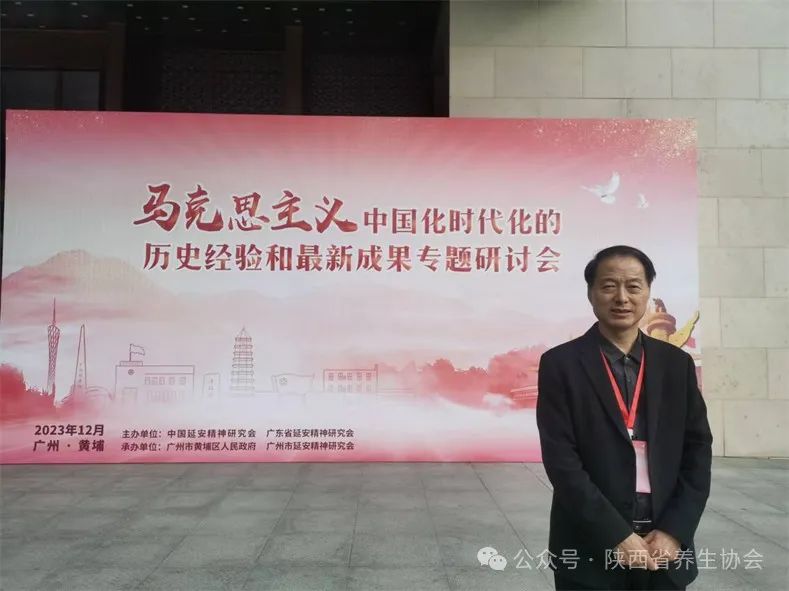
1. Constitution Adjustment
According to the human body’s morphology, physiological functions, psychological characteristics, and response states, TCM classifies constitutions into nine types. Based on different constitutions, appropriate health preservation methods are selected to adjust the constitution.
(1) Balanced Constitution (Type A)
Yin and Yang, Qi and blood are harmonized, body shape is moderate, complexion is rosy, tongue is light red with thin white coating, pulse is harmonious and strong. Energetic, with a cheerful and easy-going personality. Tolerates heat and cold, sleeps well, and adapts well to natural and social environments.
(2) Qi Deficiency Constitution (Type B)
Insufficient vitality, fatigue, shortness of breath, spontaneous sweating, tongue is light red with tooth marks, pulse is weak. Introverted personality, lack of spirit. Poor tolerance to wind, cold, heat, and dampness.
(3) Yang Deficiency Constitution (Type C)
Insufficient Yang Qi, fear of cold, cold hands and feet, prefers warm food. Tongue is pale and swollen, pulse is deep and slow. Tends to be quiet and introverted. Tolerates summer but not winter, easily affected by wind, cold, and dampness.
(4) Yin Deficiency Constitution (Type D)
Insufficient Yin fluids, dry mouth and throat, hot palms and soles, body shape is lean. Tongue is red with little moisture, pulse is thin and rapid. Impulsive personality, extroverted and active. Tolerates winter but not summer, sensitive to heat and dryness.
(5) Phlegm-Damp Constitution (Type E)
Phlegm and dampness accumulation, overweight, distended abdomen, sticky coating on the tongue. Oily skin, excessive sweating, prefers rich and sweet foods. Tongue coating is greasy, pulse is slippery. Generally mild-mannered and patient. Poor adaptation to rainy seasons and damp environments.
(6) Damp-Heat Constitution (Type F)
Damp-heat accumulation, oily complexion, bitter and dry mouth, tongue is red with yellow greasy coating. Body shape is moderate or slightly lean. Prone to irritability. Poor adaptation to humid and hot climates in late summer and early autumn.
(7) Blood Stasis Constitution (Type G)
Poor blood circulation, dull complexion, tongue is dark purple or has spots, sublingual veins are dark or thickened, pulse is choppy. Prone to irritability and forgetfulness. Poor tolerance to cold.
(8) Qi Stagnation Constitution (Type H)
Stagnation of Qi, depressed mood, anxiety, tongue is light red, thin white coating, pulse is wiry. Often lean. Poor adaptability to mental stress and rainy weather.
(9) Special Constitution (Type I)
Congenital abnormalities, physiological defects, allergic reactions. Poor adaptability.

2. Dietary Health Preservation
Dietary health preservation, abbreviated as “food therapy,” refers to the rational intake of food under the guidance of TCM theories to nourish the body, maintain health, strengthen the body, and prolong life. Food and medicine share the same source; the properties of food determine its health-preserving and therapeutic effects, mainly including nature, flavor, meridian affinity, and ascending/descending properties. “Nature” refers to the four properties of food: cold, cool, warm, and hot. Foods suitable for hot constitutions or conditions are classified as cold or cool foods. “Flavor” refers to the five basic tastes: sour, bitter, sweet, spicy, and salty, along with astringent and bland flavors, collectively known as the “five flavors.” According to the “Compendium of Materia Medica,” “Sour can astringe and gather, bitter can purge, dry, and firm, sweet can tonify and moderate, spicy can disperse and moisten, salty can descend and soften, and astringent can benefit the orifices and drain.” Summarized as sour astringes, bitter firms, sweet moderates, spicy disperses, and salty softens. “Meridian affinity” refers to the selective effects of food on certain parts of the body, meaning it has a significant effect on specific organs and their meridians while having little or no effect on others. In practical application, various properties should be combined for targeted dietary choices. There are four main principles of dietary health preservation: first, “balance the five flavors,” meaning food should not be biased, and a balanced diet is essential for comprehensive nutrition; second, “moderation,” meaning one should not overeat or undereat, and a moderate amount is necessary for health benefits; third, attention to dietary hygiene to prevent illness from food; fourth, adapt to time and individual differences.
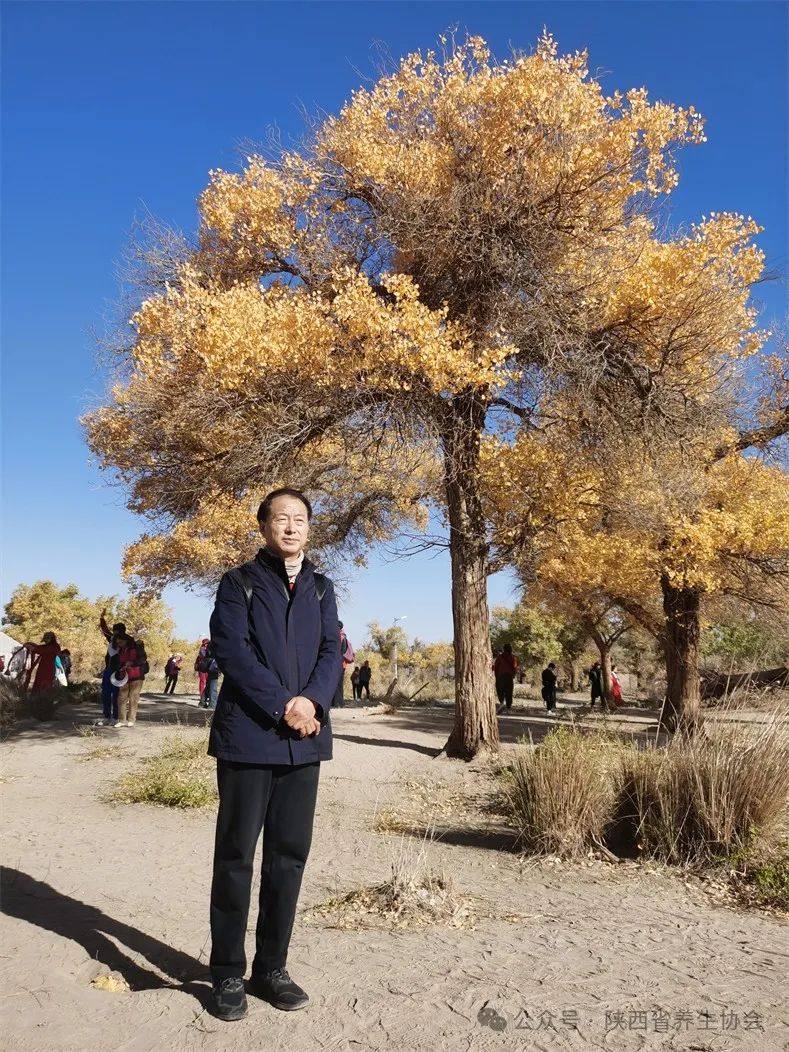
3. Traditional Exercise
Exercise health preservation, also known as traditional fitness techniques, involves using traditional sports methods for training to activate muscles and bones, regulate breath, calm the mind, smooth the meridians, and promote blood circulation, thereby enhancing physical fitness and prolonging life. Exercise should be moderate and progressive, “movement for health, stillness for spirit,” and should be consistent and persistent. Exercise health preservation is not only physical training but also a training of will and perseverance.
The characteristics of traditional health-preserving exercises mainly include three aspects:
First, health-preserving exercises are guided by the theories of traditional Chinese medicine. Based on TCM theories of Yin-Yang, organs, Qi and blood, and meridians, the basic points are to cultivate essence, practice Qi, and regulate the spirit, using movement as the primary form of exercise, guided by Yin-Yang theory to direct the virtual and real, movement and stillness, and using the concepts of opening and closing to guide the bending and stretching of movements, explaining the coordination and unity of form, spirit, Qi, blood, surface, and interior in fitness. Second, it emphasizes the coordination of intention, breath regulation, and physical movement. Intention refers to focused thought, breath regulation refers to adjusting breathing, and physical movement refers to body exercise. The three should coordinate, achieving unity of body and spirit, intention and Qi, and harmony between internal and external. Third, it integrates guidance, Qigong, martial arts, and medical principles. Traditional health-preserving exercises are the crystallization of the wisdom of the Chinese laboring people, summarized from continuous practice over thousands of years. Currently, the traditional fitness exercises widely promoted across the country include: Tai Chi, Yi Jin Jing, Wu Qin Xi, Liu Zi Jue, and Ba Duan Jin.

4. Meridian Health Care
TCM meridian health preservation is based on the theory of meridians, using acupuncture, massage, and other methods to achieve the purpose of smoothing the meridians, harmonizing Yin and Yang, and ultimately expelling pathogens and treating diseases, restoring the harmonious state of Yin and Yang. Meridian health care primarily uses the adjustment of meridians and stimulation of acupoints as basic means to invigorate the circulation of Qi and blood, achieving the effects of harmonizing Yin and Yang and nourishing the organs, treating diseases when present, preventing diseases when absent, enhancing physical fitness, and prolonging life. Common therapies for meridian health care include acupuncture, massage, and acupoint application, with acupuncture requiring appropriate professional qualifications for implementation.

5. Medicinal Health Preservation
Using medicines with anti-aging and anti-senescence effects to achieve the goals of delaying aging and strengthening the body is called medicinal health preservation, focusing on both tonification and purging. During application, six principles should be observed: do not blindly tonify, avoid excessive tonification, differentiate syndromes for tonification, purging is suitable for the excess, purging should not harm the upright Qi, and medication should be gradual. Many Chinese herbs have longevity effects, which can be roughly divided into: 1) Qi tonics, 2) Blood tonics, 3) Yin tonics, 4) Yang tonics.

6. Daily Routine Adjustment
According to the “Huangdi Neijing,” it states, “Diet should be moderate, daily routine should be regular, and one should not overwork, thus the body and spirit can be together, and one can live to a hundred years.” A regular daily routine refers to the alignment of daily activities with the natural laws of Yin and Yang and the physiological norms of the human body, forming a routine. TCM health preservation experts believe that a regular daily routine benefits health, maintaining the balance and coordination of Yin and Yang, which is what the ancients referred to as “work at sunrise and rest at sunset.” Otherwise, it may lead to premature aging and shortened lifespan. Ancient health preservationists believed that in spring and summer, one should nourish Yang, while in autumn and winter, one should nourish Yin. In spring, one should “sleep late and rise early, walk extensively in the courtyard, and loosen the hair to allow the spirit to flourish”; in summer, one should “sleep late and rise early, not be averse to the sun, keep the spirit calm, and allow the flowers to bloom”; in autumn, one should “sleep early and rise early, rise with the rooster, keep the spirit calm, and ease the autumn penalties”; in winter, one should “sleep early and rise late, wait for sunlight, keep the spirit hidden and concealed, and avoid private intentions.” The living environment is crucial. TCM believes that the quality of the natural environment directly affects lifespan. Health preservation experts have always emphasized harmony between humans and nature. Additionally, the ancients advocated for a balance of work and rest, maintaining regularity and moderation, believing that excessive labor or rest leads to internal injuries and deficiencies, thus it is essential to balance work and rest.

7. Entertainment Health Preservation
Entertainment health preservation uses entertainment, a common human behavior, to bring joy and tranquility to the mind, achieving the goals of disease prevention and health maintenance. There are two types of entertainment health preservation methods: one focuses on fitness, requiring active participation in entertainment activities such as playing musical instruments, singing, dancing, playing chess, gardening, poetry writing, and painting; the other focuses on mental health, which does not require active participation, such as watching performances or movies. The four arts of the ancients, namely music, chess, calligraphy, and painting, are also the main forms and methods of entertainment health preservation. Music is a good medicine for health, capable of expressing emotions, regulating moods, harmonizing blood circulation, nourishing the five organs, and promoting physical fitness. Playing chess can cultivate character and enhance intelligence, bringing comfort to the body and mind. Calligraphy and painting integrate learning, fitness, and artistic appreciation, allowing enjoyment in art to achieve health benefits. Singing is also an excellent health-preserving method. Health preservation experts also advocate for hiking and enjoying beautiful natural scenery, observing flowers, trees, birds, and fish.
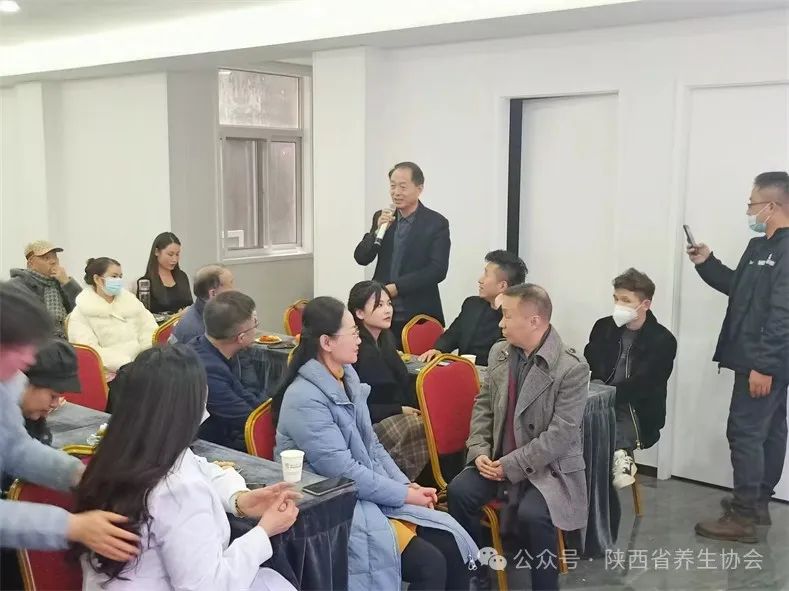
8. Spiritual Health Preservation
Spiritual health preservation is guided by the TCM concept of “the correspondence between heaven and man,” through nurturing the heart and spirit, regulating emotions, maintaining a peaceful, optimistic, and open-minded attitude, achieving health and longevity. Health preservationists believe that spiritual health preservation lies in quietude, and the essence of quietude is nurturing the heart. “Confucianism emphasizes rectifying the heart, Buddhism emphasizes clarity of heart, and Daoism emphasizes refining the heart, all of which involve the cultivation of the heart.” The methods of regulating the spirit mainly include the following aspects:
(1) Tranquility nurtures the spirit
(2) Aspiration nurtures virtue
(3) Self-cultivation nurtures character
(4) Regulating emotions
9. Ten Common Simple Health Preservation Methods Recommended in “Health Literacy of Chinese Citizens”
(1) Tooth Tapping Method
Every morning upon waking, tap the upper and lower teeth together, first tapping the molars (the back teeth on both sides) 30 times, then the front teeth 30 times. This helps strengthen the teeth.
(2) Mouth-Closed Breathing Method
Regularly close the mouth to adjust breathing, maintaining even and gentle breaths.
(3) Saliva Swallowing Method
Every morning, press the tongue against the upper palate or lick the upper palate with the tongue, and when the mouth is full of saliva, swallow it several times. This aids digestion.
(4) Face Rubbing Method
Every morning, rub the hands together to warm them, then use the middle fingers along the sides of the nose from bottom to top, moving to the forehead and then spreading the hands to the sides, down the cheeks. Repeat this 10 or more times until the face feels slightly warm. This can make the face rosy and eliminate fatigue.
(5) Hair Combing
Insert the fingers of both hands into the hair and comb from front to back, massaging the head 50 to 100 times. This helps to smooth Qi and blood, clearing the mind.
(6) Eye Movement Method
Rotate the eyes from left to right several times, then from right to left several times, and then close the eyes for a moment. Do this 4 to 5 times daily. This can clear the liver and improve vision.
(7) Ear Covering Method
Cover the ears with both hands, nodding the head down and up 5 to 7 times. This can clear the mind and dispel distractions.
(8) Qi Lifting Method
During inhalation, gently contract the anal sphincter and perineum upwards, then slowly exhale and relax. This can be done 5 to 7 times daily, each time for 5 to 10 minutes. This benefits the flow of Qi.
(9) Abdominal Massage Method
After each meal, massage the abdomen in a clockwise direction around the navel about 30 times. This aids digestion and relieves bloating.
(10) Foot Sole Massage Method
Before sleeping each night, massage the soles of the feet with the thumb in a clockwise direction 100 times. This strengthens the waist and kidneys.
Source: “Lifestyle and Health” — Authors: Zhang Shuangxue, Bai Wuqian, Shaanxi Science and Technology Publishing House, published in August 2024
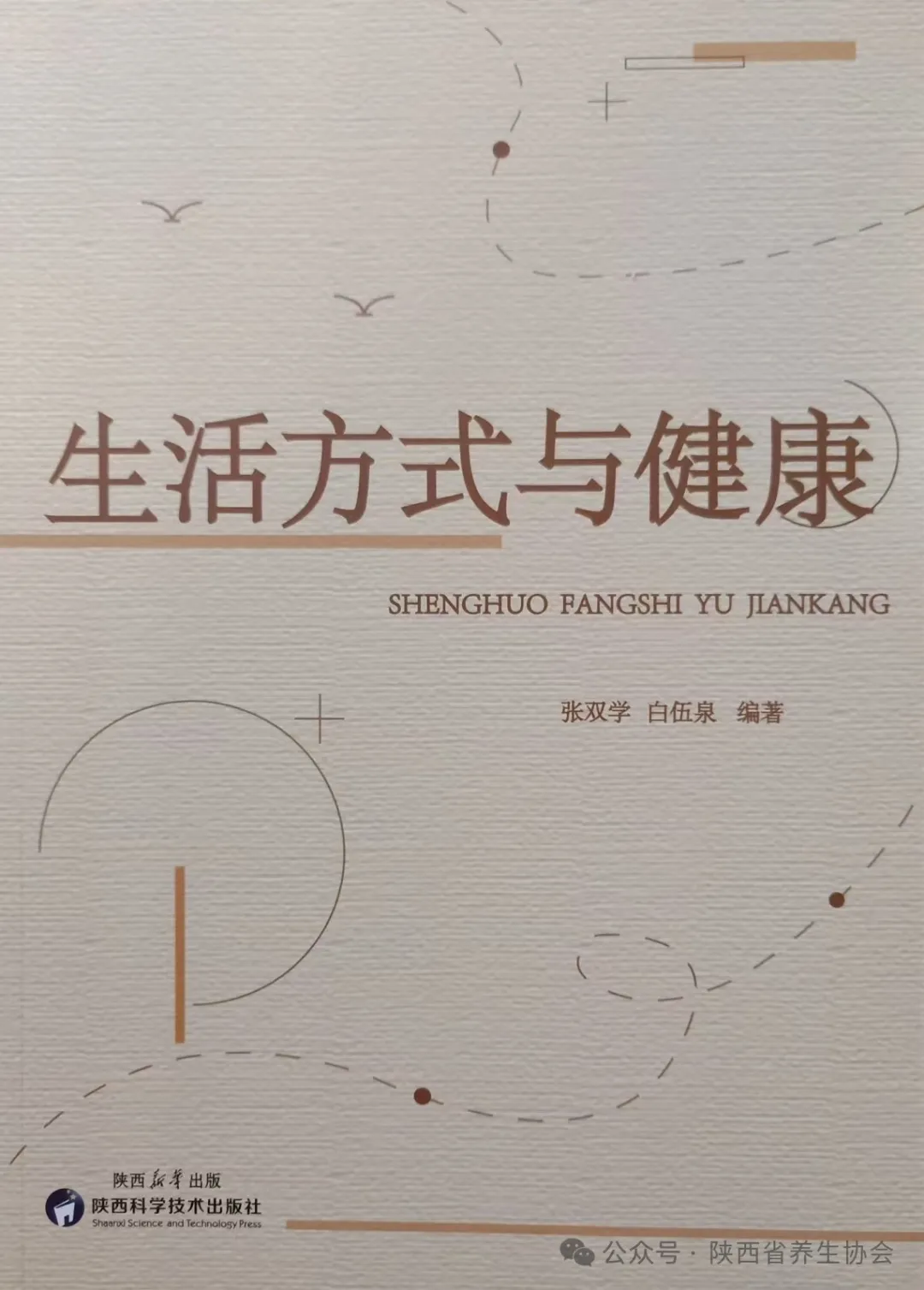
About Zhang Shuangxue:
Former Level II Inspector of the People’s Congress in Lintong District, Xi’an, President of the Yan’an Spirit Research Association, Senior Health Manager, Executive Director of the Shaanxi Health Preservation Association, Member of the Expert Committee of the Shaanxi Health Management Industry Promotion Association, Health Expert Consultant of the Aging Health Association. Passionate about medicine and dedicated to health preservation research.
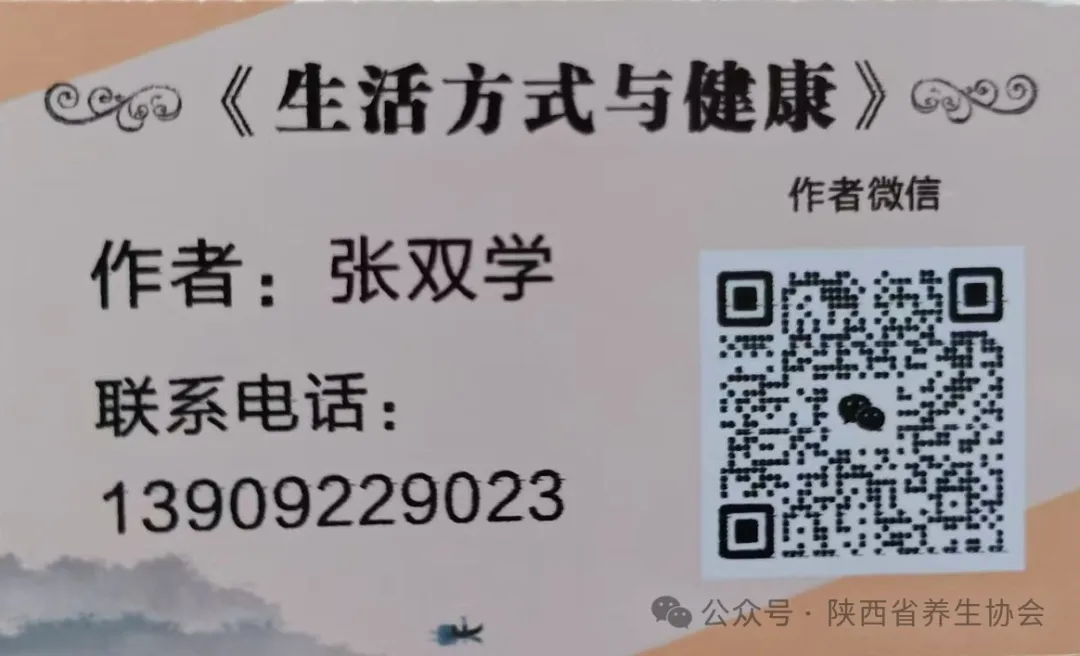
 Warm Reminder: Some text and images are sourced from the internet,the article has no commercial behavior and does not bear any legal responsibility,the copyright belongs to the original author, if there is any infringement, please contact us for deletion, the articleis for public reference only and may not be suitable for everyone, if there are any symptoms, please adjust under the guidance of professionals or seek medical attention.
Warm Reminder: Some text and images are sourced from the internet,the article has no commercial behavior and does not bear any legal responsibility,the copyright belongs to the original author, if there is any infringement, please contact us for deletion, the articleis for public reference only and may not be suitable for everyone, if there are any symptoms, please adjust under the guidance of professionals or seek medical attention.


Thank you for your attention, contributions are welcome, and submissions must be original.
Phone: 029-87438715Website: http://www.sxsysxh.orgEmail: [email protected]

